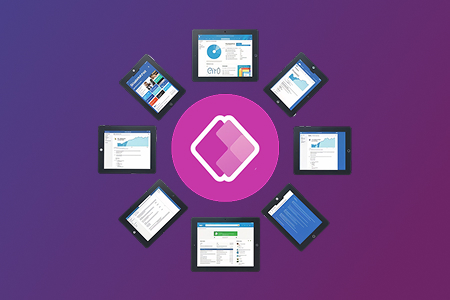The concept of “the cloud” refers to more than simply an excellent new way to keep your media files in the cloud. It’s a component of a business strategy that’s rapidly expanding around the globe. As a result of cloud computing, many companies are rethinking their whole approach to data storage, management, and access.
When it comes to cloud computing, larger companies have an advantage. They can access all the required service benefits and collaborate with the big cloud providers. But the cloud can be accessible to businesses of all sizes.
The benefits of cloud computing cannot be overstated; it allows for more adaptability, data recovery, low or no maintenance, quick and simple access, and increased security.
Moreover, the only thing that has remained the same over the decades is that change is inevitable. One thing is unavoidable, especially in technology, and that is change. This is true regardless of global pandemics, macroeconomic or microeconomic uncertainties, or geopolitical unrest.
In addition, cloud computing’s rapid growth in popularity among SOHO (small office/home office) and SMB (small and medium-sized business) owners can be attributed to its cost-cutting benefits. In reality, businesses of all sizes and across all sectors are moving to the cloud to take advantage of its cost-effective speed and efficiency improvements.
Let’s understand the term “Cloud Computing”?
Cloud computing is the practice of making available, over the internet, information technology resources on demand for a fee.
Paying for access to a cloud computing service can be a viable alternative to purchasing and maintaining your hardware and software solutions. It’s cheaper and easier than doing everything by yourself!
The Money You Can Save Thanks to Cloud Computing
Low or No Initial Costs
Moving to the cloud from an on-premises IT system has much lower initial expenditures. When you’re responsible for your server management, unforeseen expenses may be connected with maintaining the system.
The cloud service provider can meet all your infrastructure requirements at a flat monthly rate. Furthermore, cloud services are analogous to other utility options. The cloud service handles all necessary upkeep, and you pay only for the resources you use.
Highest Capacity for Hardware Use
Providers of cloud servers can save money by consolidating and standardizing the hardware used in their data centers. When you move to a cloud-based model, the cloud provider’s server architecture handles your workload and the computing demands of other clients.
This will ensure that all hardware resources are used to their utmost potential, depending on the demand. When using the cloud, businesses can save money since the cloud service provider can take advantage of economies of scale.
Effortless Energy Cost Cuts
An in-house information technology infrastructure, especially one with always-on servers, can have astronomical energy needs. This highlights the necessity of strategically deploying IT resources. There’s a risk of inefficient server use and rising energy costs when handling IT in-house.
On the other hand, cloud computing is highly effective and requires less energy. Maximizing server efficiency means less money spent on electricity. Your cloud service provider can charge you much less for the systems you use since they save so much money on energy.
No Internal Group
You must be aware of the high cost of maintaining an in-house IT department if you have been responsible for administering an IT system on your own. Due to the specialized nature of IT jobs, earnings and wages tend to be on the higher end. The industry’s high pay scales can also be traced back to the talent crunch. Then there are the expenses and headaches of hiring and housing the squad.
With cloud computing, you don’t have to worry about maintaining a local IT department to meet your demands. Not having an in-house team also means not paying for team members benefits and salaries. The costs of things like an office lease are not included either. In addition, you won’t have to stress about how things will proceed without a key employee.
If you currently have IT staff, put them to use in areas of the business, such as app development, where you can save the most money.
Eliminates Redundancies
Internal IT management faces a significant challenge from redundancies. You can’t rely on just one piece of hardware to keep system management running well. In the event of a system failure or crash, backup hardware must be ready to take over.
More expensive hardware is worth it, but it will increase your budget. In addition, whether you utilize them or not, they still need regular maintenance. To pay for upkeep on useless hardware is a waste of money.
Migrating to the cloud is a low-cost option for meeting your redundancy needs. Typically, cloud service providers use a network of data centers to store your information and guarantee its availability in the event of a data center failure. With cloud computing, your system can be up and running again quickly after a catastrophic event such as a flood, fire, or system crash.
To conclude
While using the cloud can assist cut expenses, it can also be an integral part of an organization’s strategy and, in some cases, the foundation for unrivaled competitive advantage and market supremacy.
Learn More: Cloud Services of Metaorange Digital










